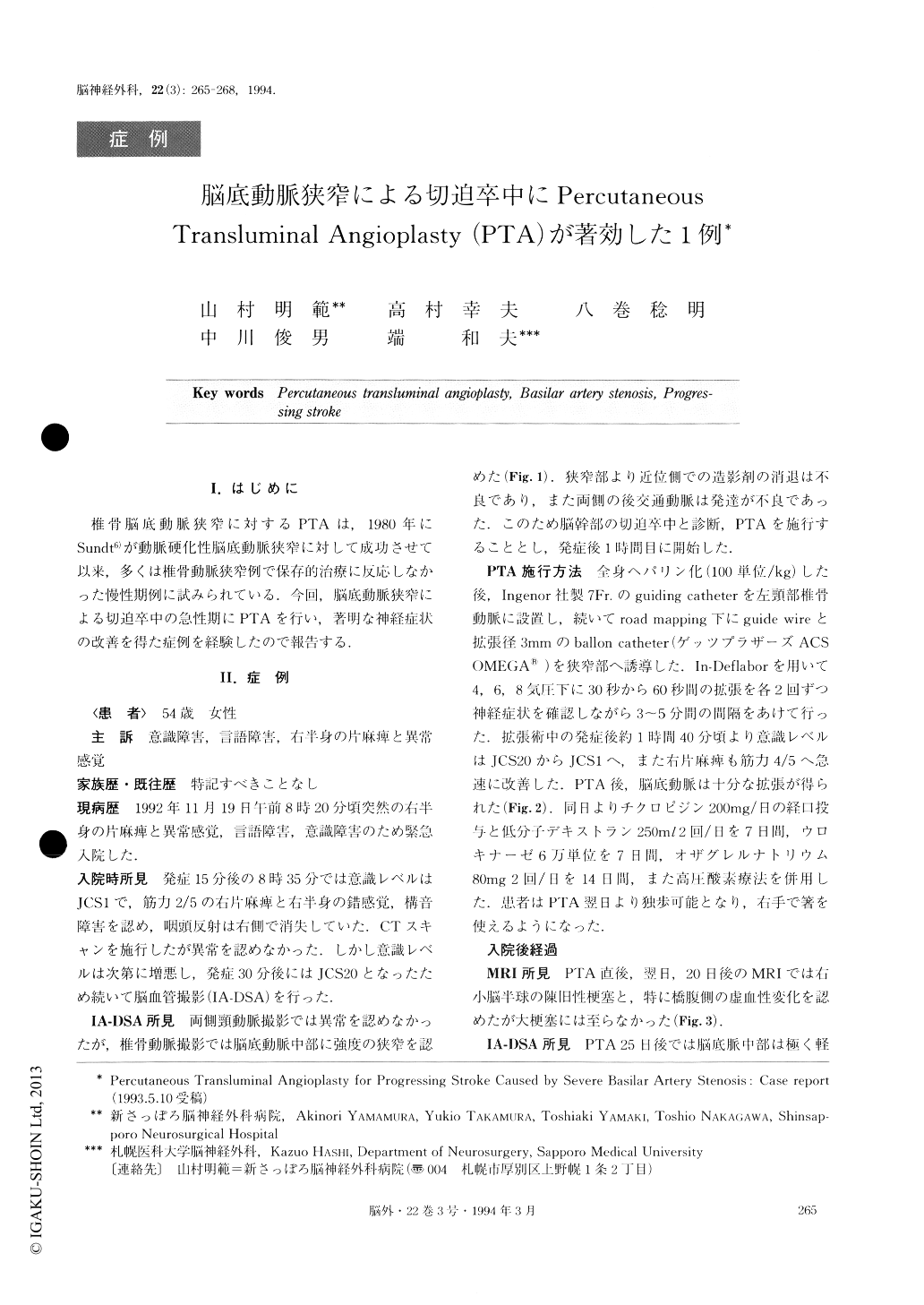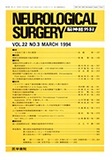Japanese
English
- 有料閲覧
- Abstract 文献概要
- 1ページ目 Look Inside
I.はじめに
椎骨脳底動脈狭窄に対するPTAは,1980年にSundt6)が動脈硬化性脳底動脈狭窄に対して成功させて以来,多くは椎骨動脈狭窄例で保存的治療に反応しなかった慢性期例に試みられている.今回,脳底動脈狭窄による切迫卒中の急性期にPTAを行い,著明な神経症状の改善を得た症例を経験したので報告する.
We encountered one case of progressing stroke caused by severe basilar artery stenosis. The patient was treated with emergent percutaneous transluminal angioplasty (PTA) with satisfactory results. A 54 year-old woman was admitted 15 minutes after the sudden onset of rt. hemiparesis, rt. hemidysesthesia, dysarthria and consciousness disturbance. CT scan on admission showed no abnormal findings. The consciousness levelof the patient deteriorated rapidly from JCS 1 to JCS 20 within 30 minutes from the ictus. An emergent angiogram revealed severe basilar artery stenosis at its middle portion and poorly developed collateral circula-tion. One hour after the stroke occurred, PTA was per-formed. Using a 3mm diameter balloon catheter, we in-troduced the balloon into the stenotic lesion and in-flated it 6 times from 4 atm to 8 atm pressure. The pa-tient recovered immediately on the operating table im-proving from JCS 20 to JCS 1. Rt. hemiparesis also im-proved. Follow-up MRI showed a small area of ische-mic change in the brain stem, but no large infarctionappeared. The patient was discharged with no neuro-surgical deficits after 30 days of PTA. PTA for basilar artery stenosis is still a controversial subject. One reason is the risk of basilar artery perforating branches occlusion by balloon catheter and the other is the diffi-culty of introducing a flexible balloon catheter into the basilar artery beyond the acute angulation of the ver-tebral artery. If those two problems were solved, PTA would be the first-choice therapy for basilar artery ste-nosis in both acute and chronic stages.

Copyright © 1994, Igaku-Shoin Ltd. All rights reserved.


